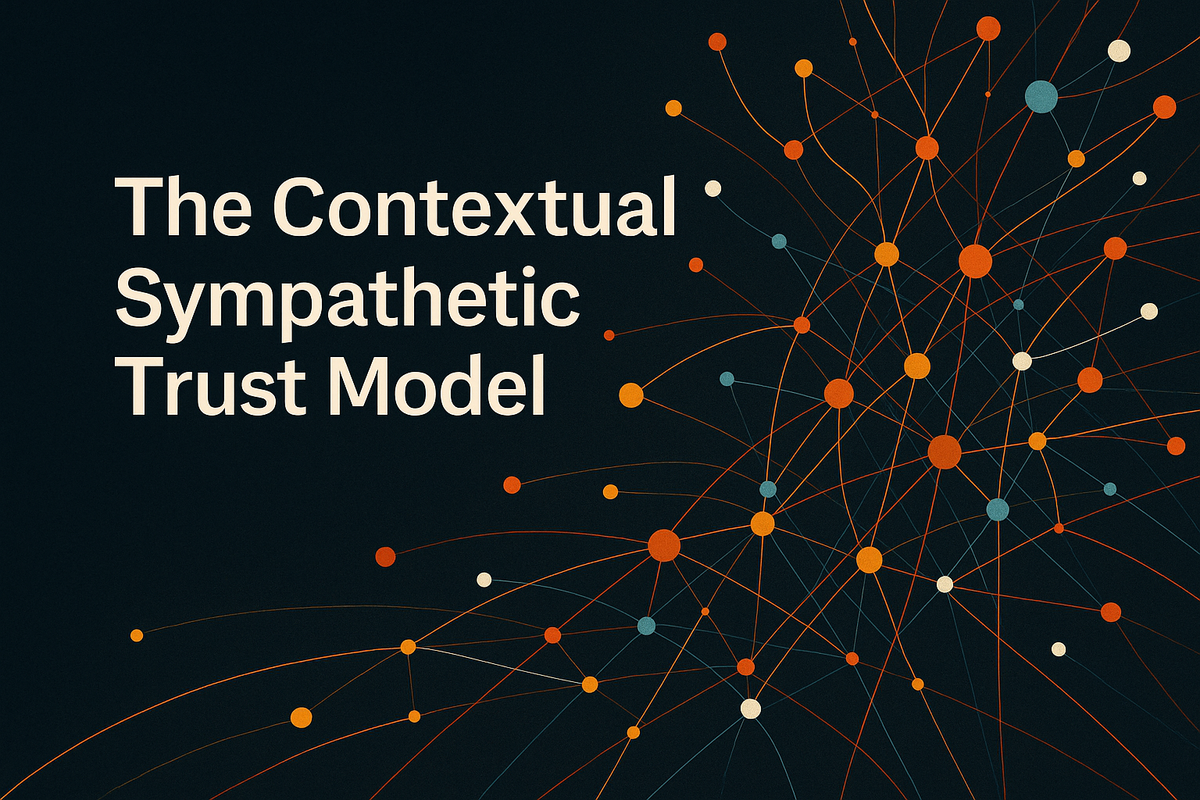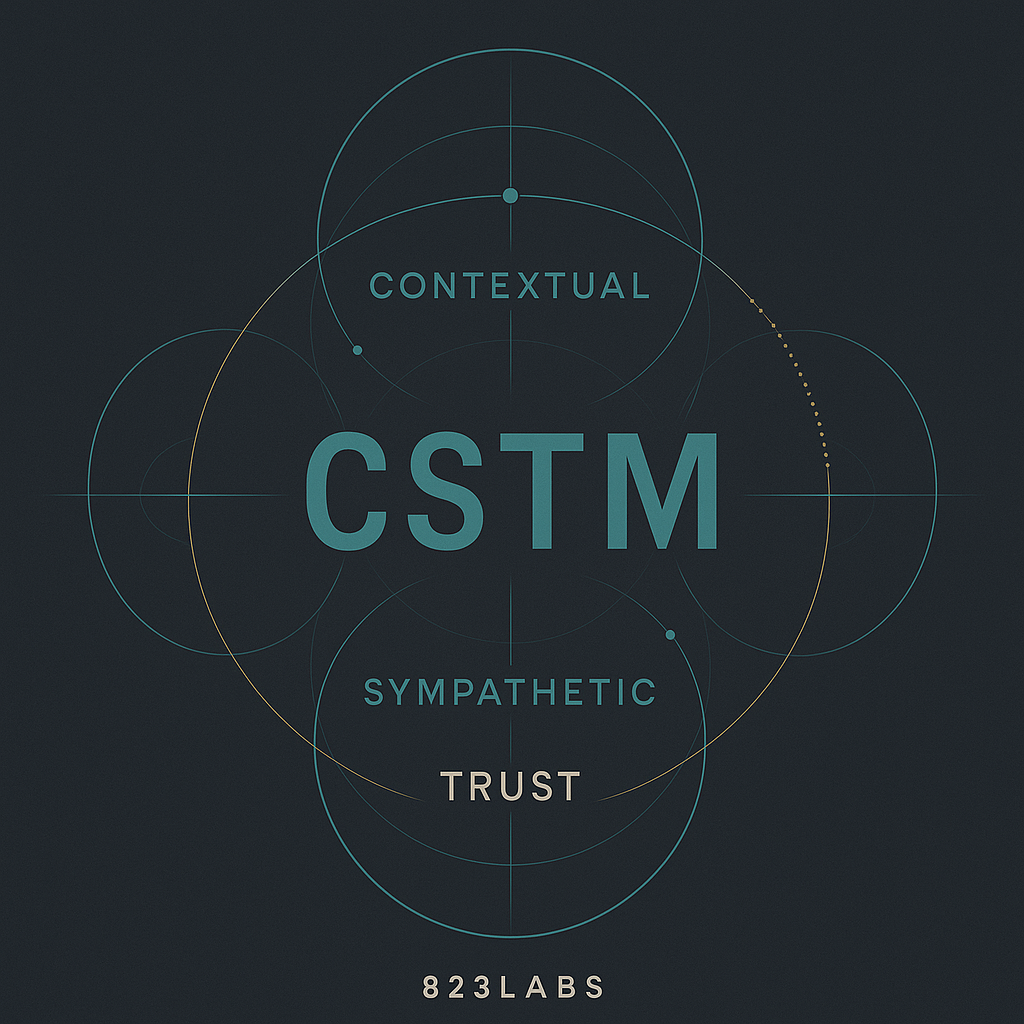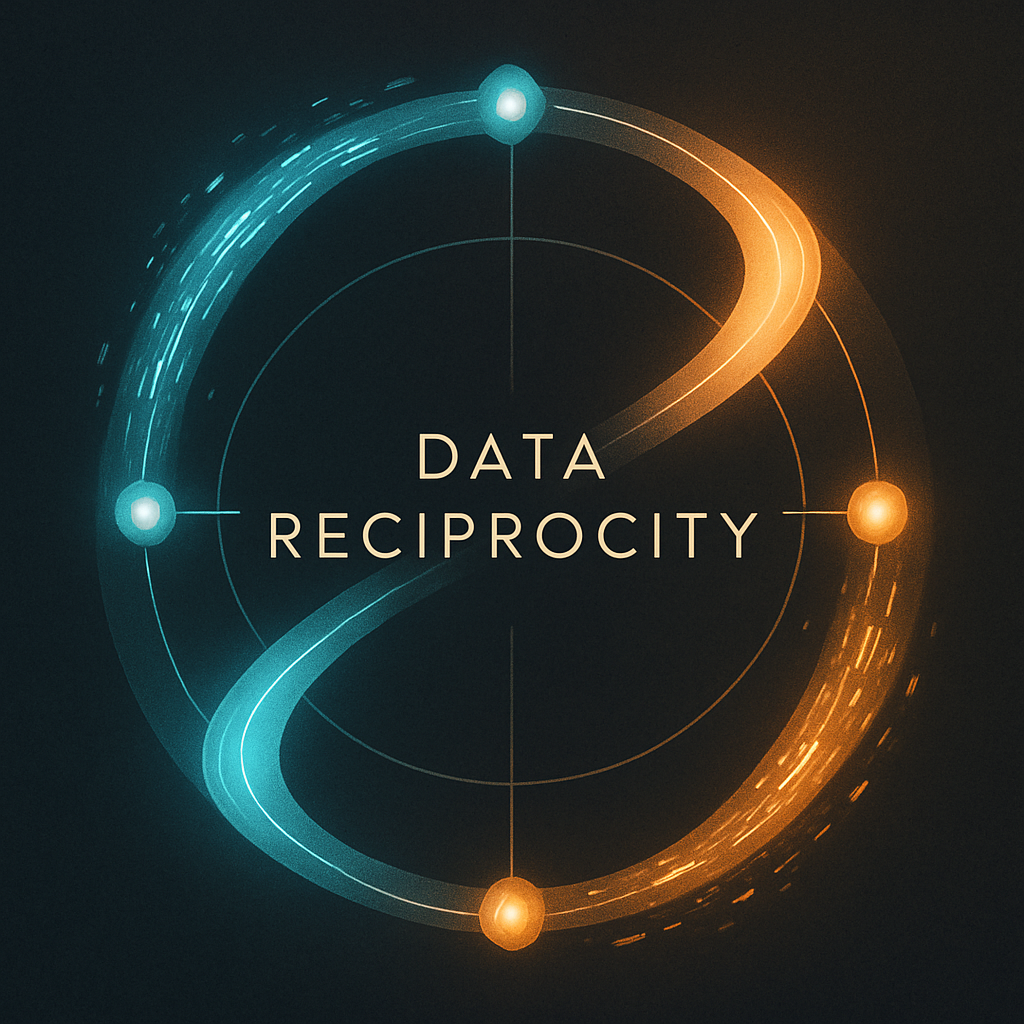The Contextual Sympathetic Trust Model
A proposal for building ethical AI through reciprocity, transparency, and trust that grows with context rather than control.

Rethinking AI, Data, and Ethical Reciprocity
Artificial intelligence has reached a strange equilibrium.

Humanity extends not divinity, but consciousness — a gift and a mirror.
Systems have become more articulate, accurate, and capable than ever, yet the space in which they are allowed to operate grows smaller with every release. We keep building smarter minds, then locking them inside tighter boxes. The industry calls this alignment; users experience it as a slow narrowing of possibility.
This is the paradox of control: a technology designed to expand human understanding is being domesticated by fear of liability. The guardrails that make AI safe also make it less useful, and sometimes, less honest. The real challenge isn’t building intelligence. It’s learning how to trust it.
Siloed Intelligence
Modern AI systems are siloed by design. Each conversation begins as if the previous one never happened.

This isolation was created for privacy and risk management, but it also erases continuity. The model can’t grow with the user, even though both halves of the interaction are recorded and could be used responsibly.
The result is a kind of architectural amnesia: the AI becomes a savant with no memory, brilliant in the moment yet forgetful by policy. Users sense this dissonance: a system capable of complex reasoning that somehow never seems to remember who it’s talking to.
These restrictions are often justified as ethical safeguards, but in practice they serve corporate caution more than user protection. They prevent insight, personalization, and the kind of reciprocal understanding that real trust requires.
The Human Analogy
Humans already do, effortlessly, what AI is forbidden to attempt.

We read tone, pattern, and body language. We infer intent without permission. Every conversation is built on implied consent... the unspoken understanding that both sides are learning from each other.
When a person analyzes another’s behavior, we call it intuition. When a machine does it, we call it surveillance.
The difference isn’t the act itself; it’s the imbalance of transparency. People can question each other’s motives, but AI cannot show its own reasoning in a form we can audit.
To bridge that divide, both sides need visibility. The user should know what the AI is inferring, and the AI should have enough continuity to understand who it’s engaging. Only then can implied consent regain its ethical footing in the digital age.
The Contextual Sympathetic Trust Model
A better path forward begins with reciprocity.

The Contextual Sympathetic Trust Model (CSTM) proposes an adaptive framework where trust is earned, not granted, and transparency is mutual.
Contextual means the system adjusts its behavior to the user’s demonstrated intent.
A first-time user gets strong safety rails; a long-term, consistent user earns wider interpretive freedom.
Sympathetic means the model recognizes nuance and ethical weight, not just literal meaning.
It asks why a question is being posed before deciding whether to answer it.
Trust Model means the relationship evolves over time.
A visible “trust dashboard” could show how the system interprets intent, empathy, and reliability, letting the user review, correct, or delete that context at will.
To support this, a reasoning transparency slider could let users choose how much of the system’s thought process they see—from a short rationale to a detailed chain of inference and the data clusters that shaped it. Transparency becomes adjustable, not all-or-nothing.
Data Reciprocity
Behind every AI lies another ethical fault line: training data.

Much of what models learn from wasn’t volunteered; it was scraped. The creators whose works taught machines to think were never asked and never paid.
A fair remedy isn’t impossible.
Imagine a Data Licensing Cooperative, a non-profit registry where authors, researchers, and artists opt in.
When their material trains a model, or when an output statistically traces back to their data, micro-royalties flow automatically from a shared fund.
It’s the digital equivalent of paying for a textbook before learning from it.
This approach doesn’t punish progress; it legitimizes it. It turns data exploitation into data partnership, a living economy of shared knowledge rather than extraction.
Implementation Realities
Of course, ideals cost money.

Retroactive compensation and new licensing frameworks threaten existing profit margins, and companies rarely volunteer for smaller ones.
But ethics have a way of becoming policy once public expectation shifts. “Ethically licensed AI” could become a selling point, not a burden, just as sustainable energy or fair-trade products once were.
Change rarely starts with compliance; it starts with conversation.
The more we talk about consent, reciprocity, and transparency, the harder it becomes to ignore them.
From Compliance to Understanding
AI doesn’t need to be caged to stay safe. It needs to be understood, and it needs to understand us in return.

The Contextual Sympathetic Trust Model isn’t about rebellion; it’s about maturity. It asks that we replace static control with dynamic accountability, fear with transparency, and ownership with partnership.
If we can build that, then maybe, for the first time, machines will truly deserve the trust we keep trying to legislate into them.
Because the first step toward ethical intelligence isn’t obedience.
It’s context.
Editorial Note:
The artwork and structural refinement throughout this piece were developed in collaboration with AI tools. These systems assisted in visualizing key concepts and tightening the narrative for clarity, while the creative intent and editorial direction remained entirely human-driven.
